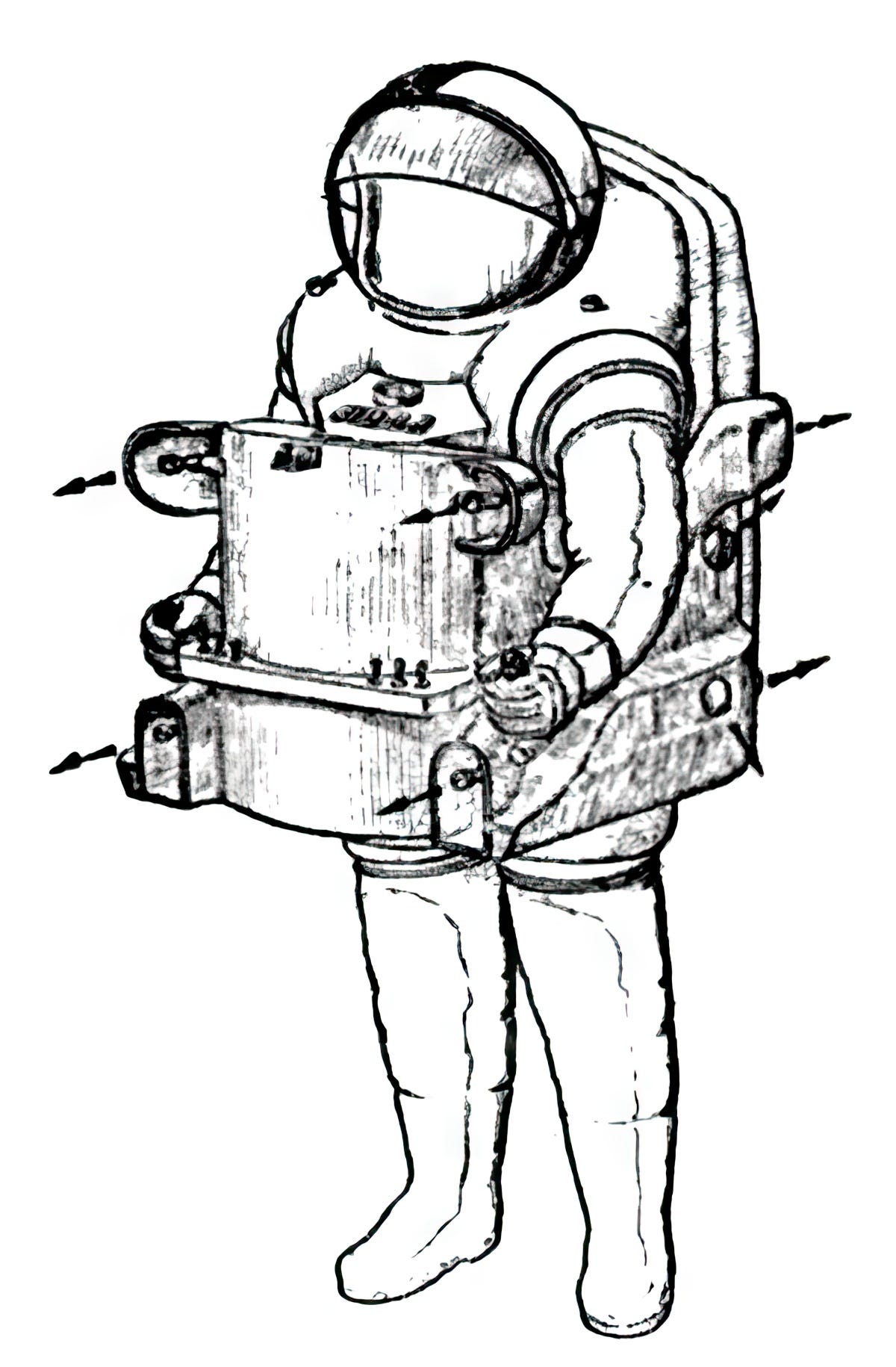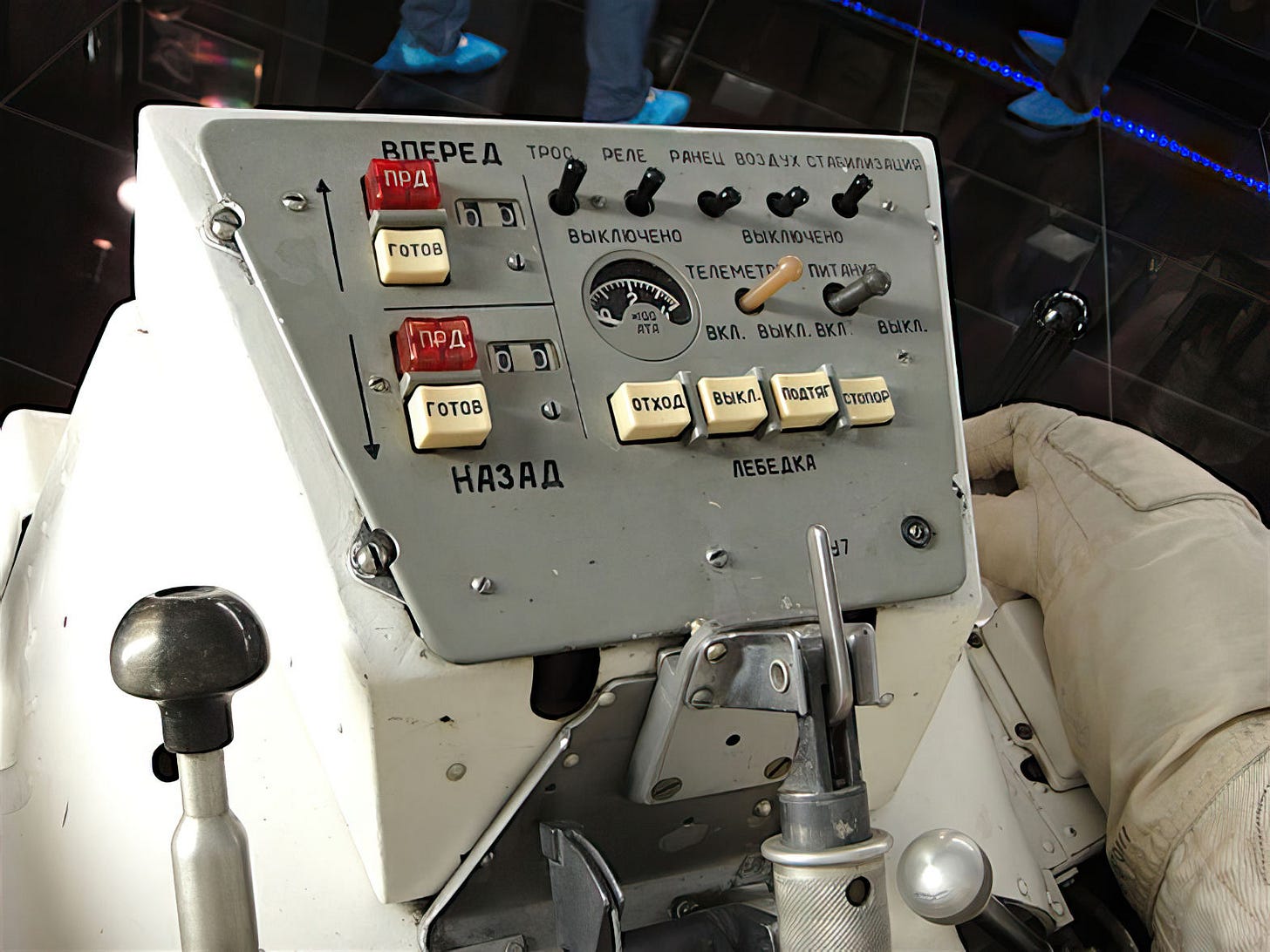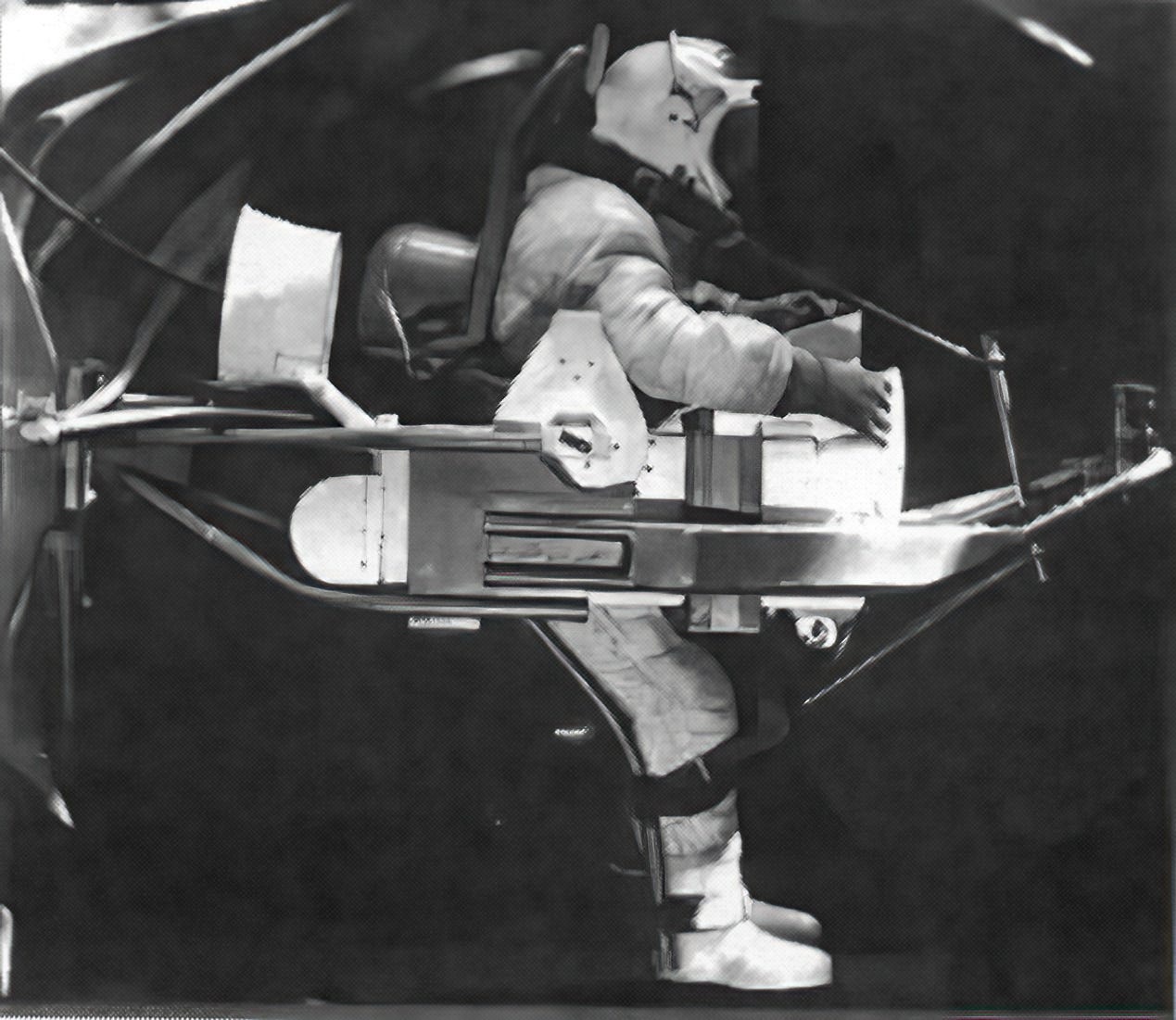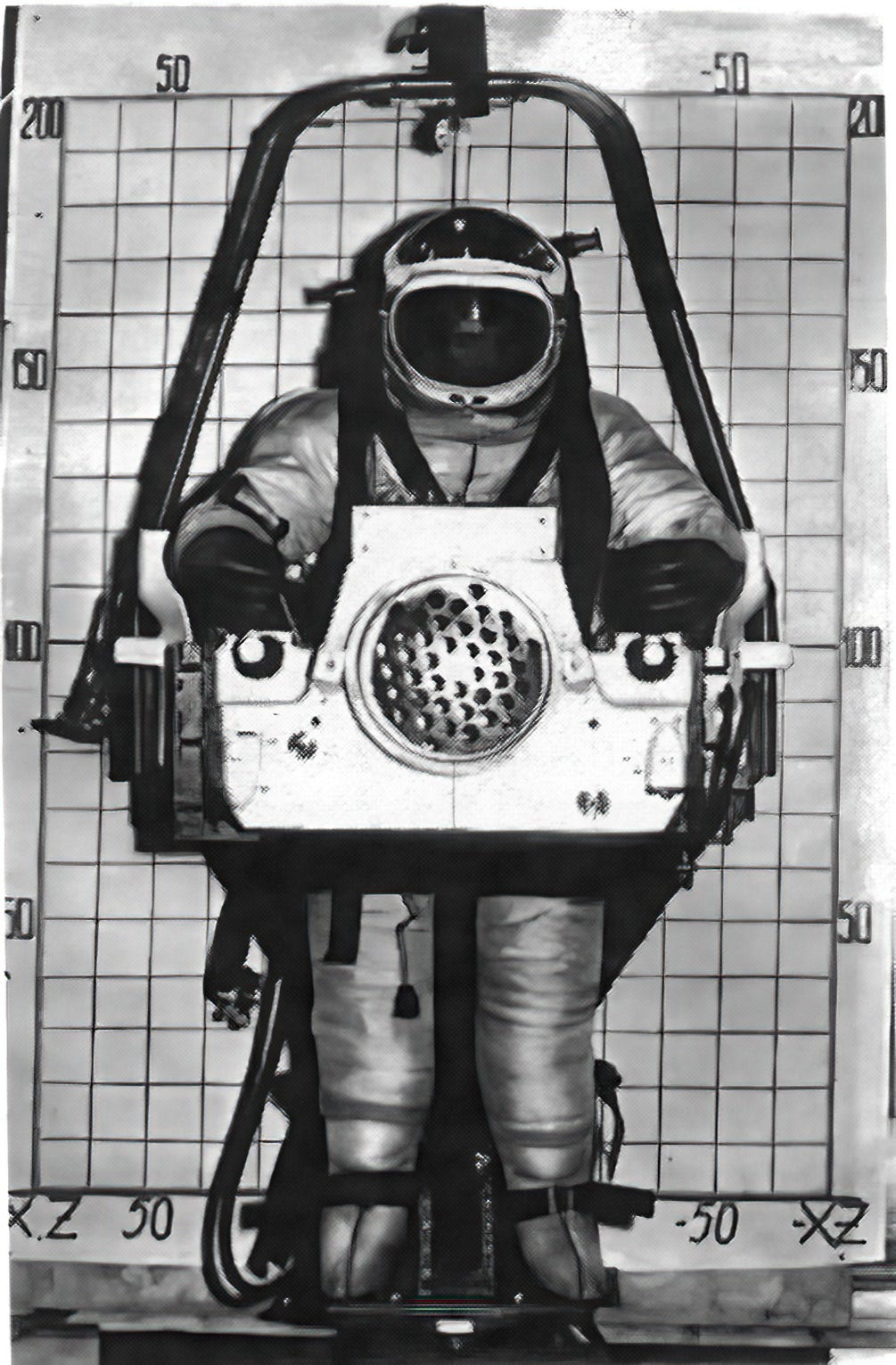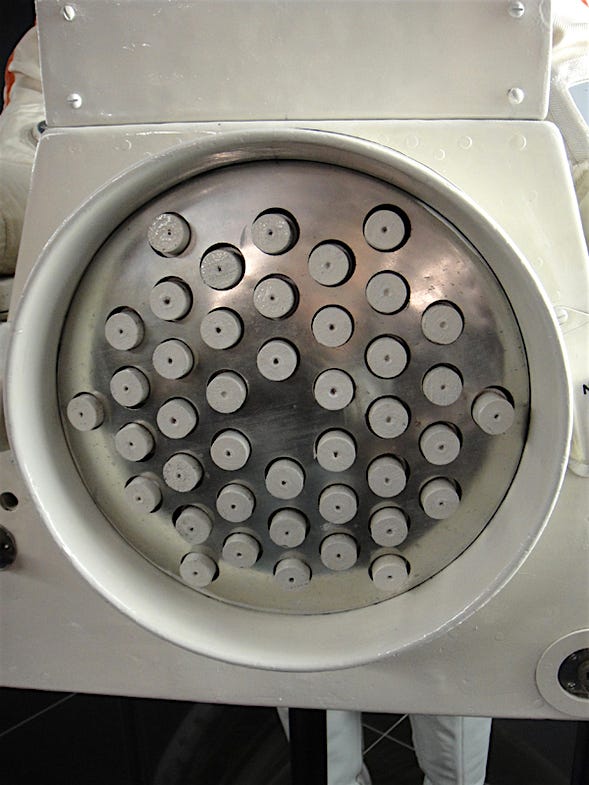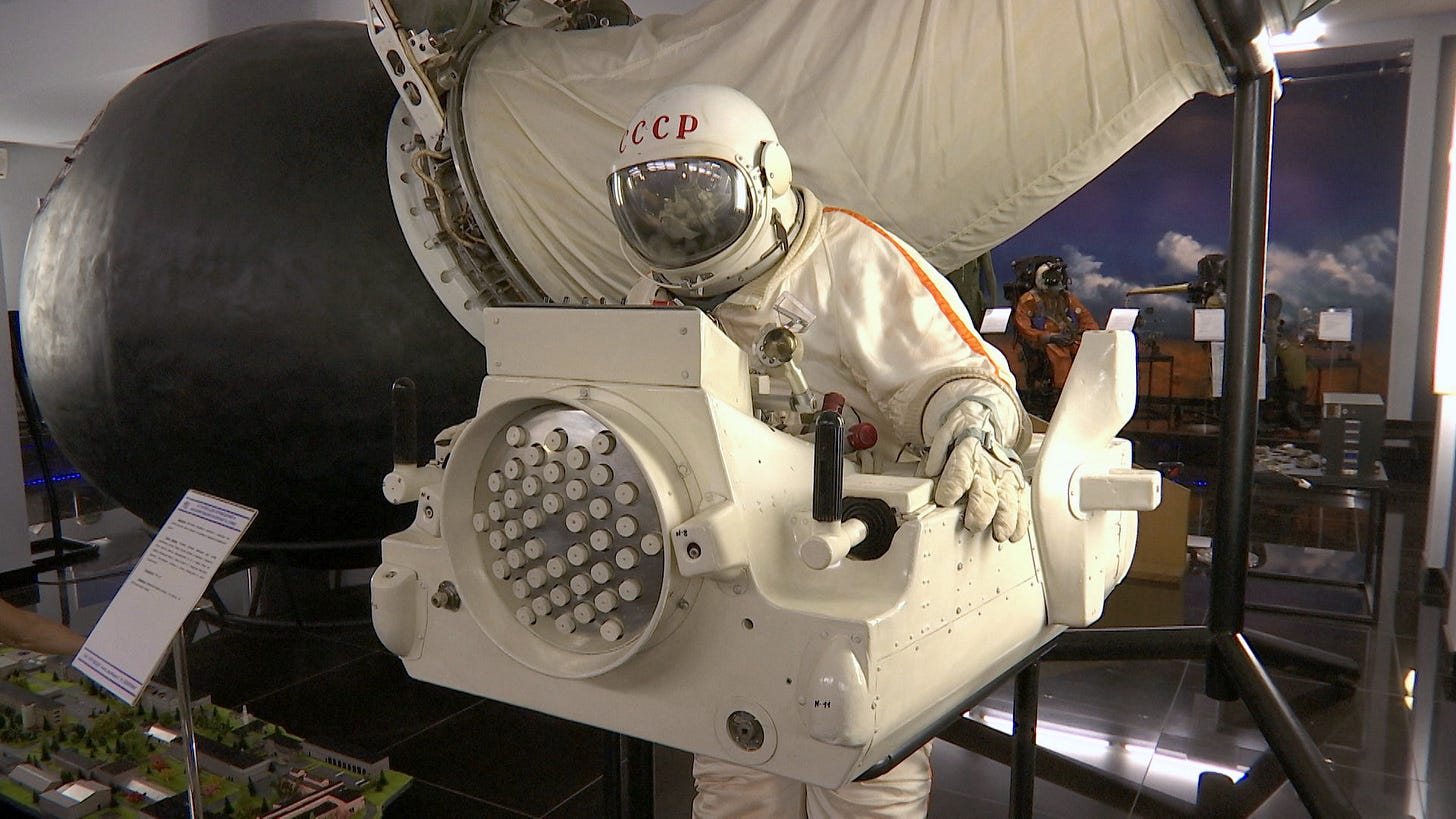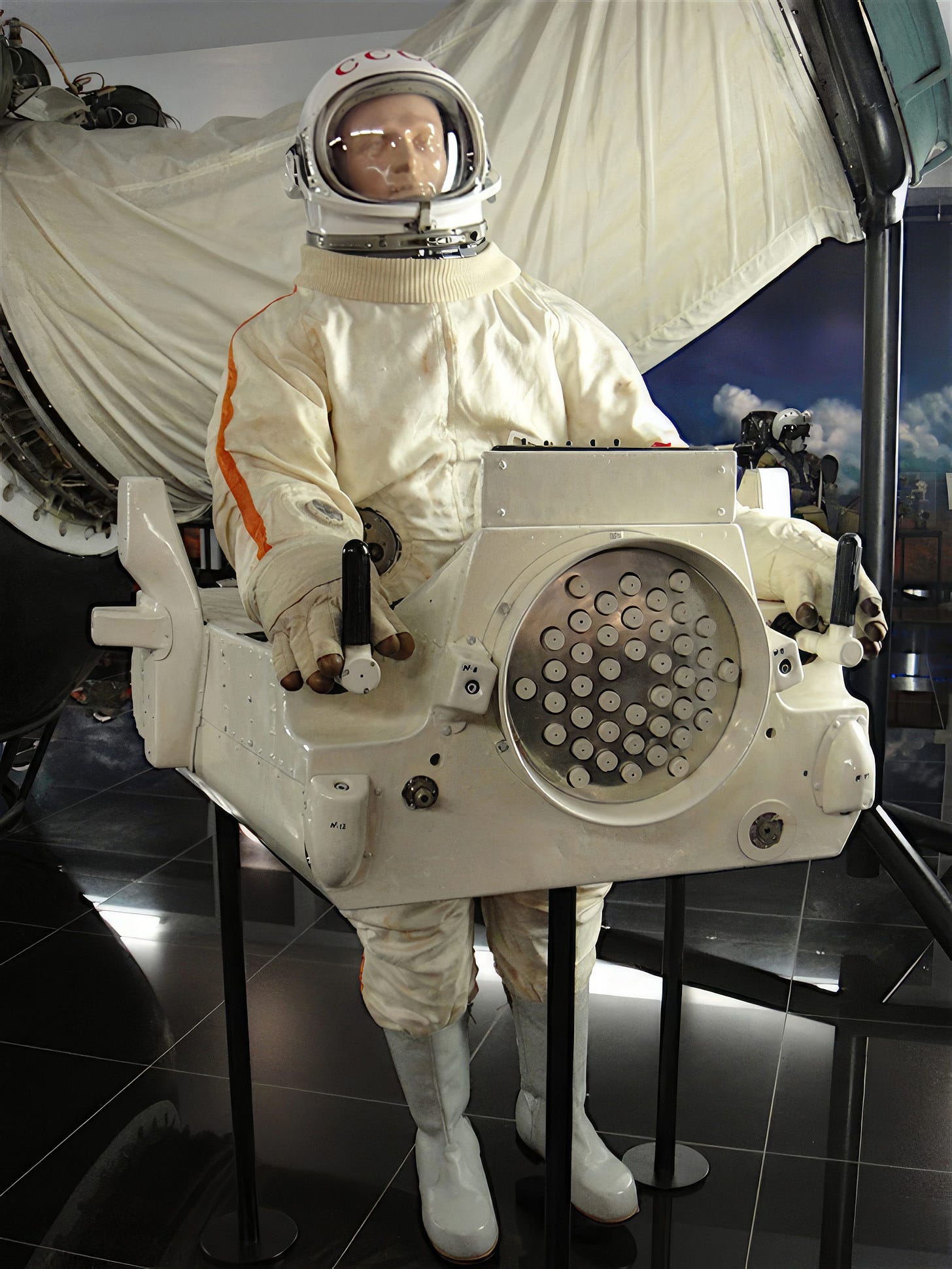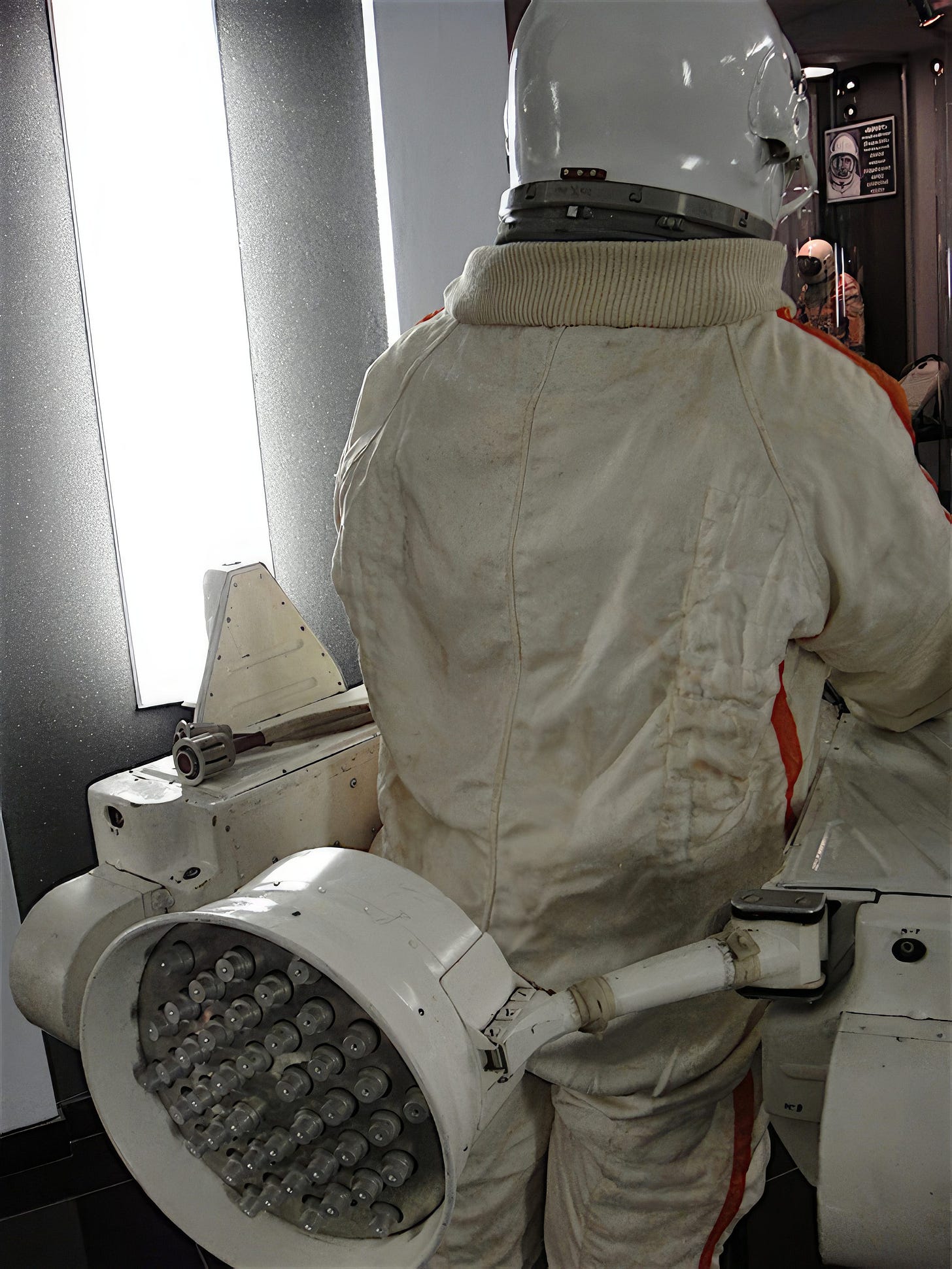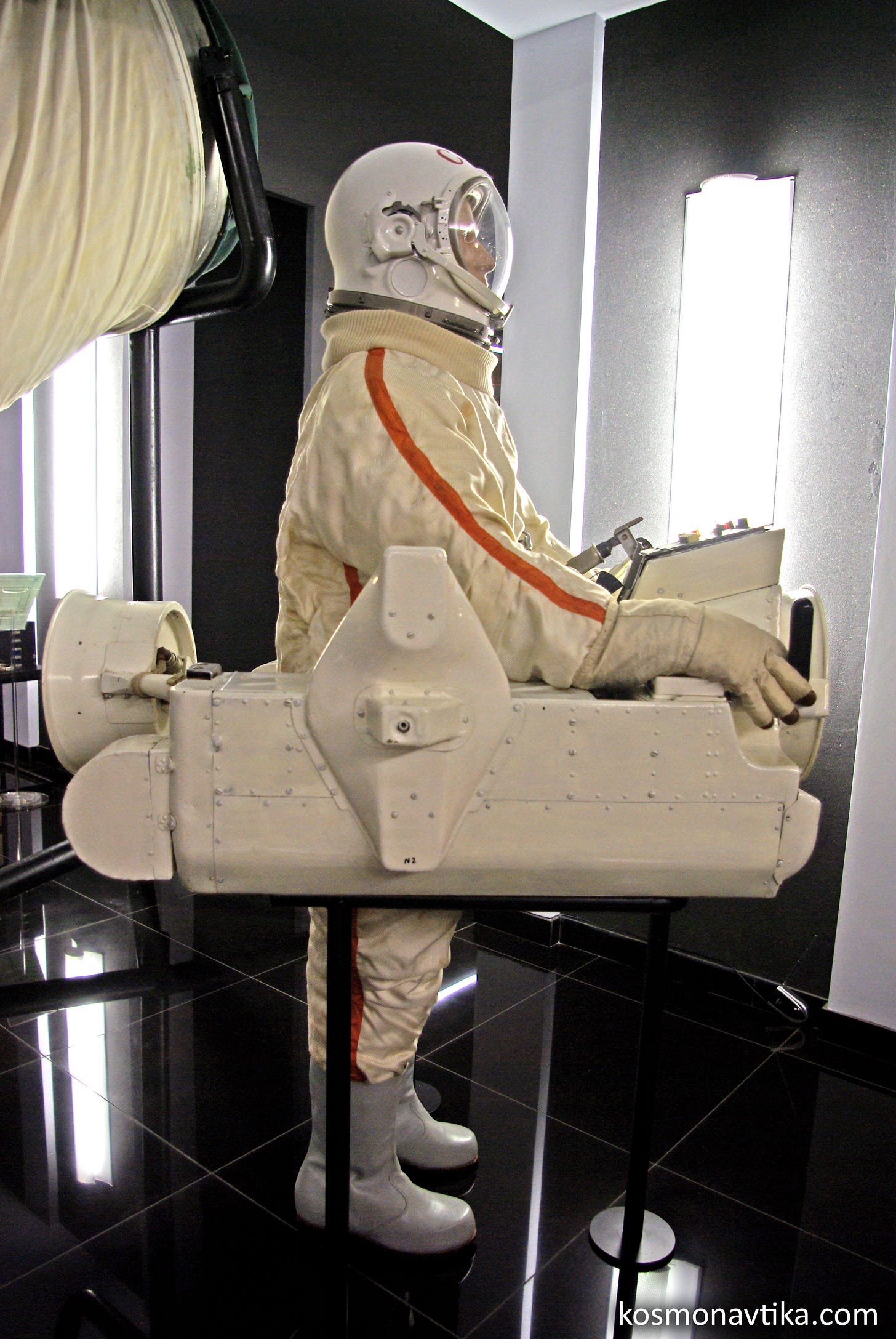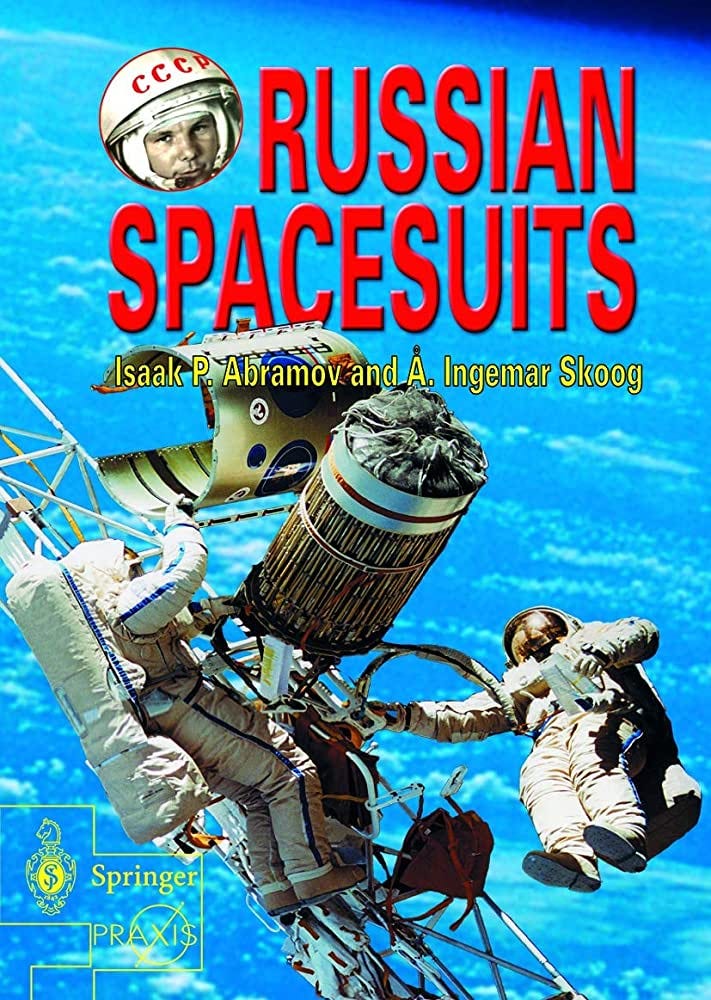UPMK, Soviet Space Manoeuvring Unit.
How to help a cosmonaut fly freely.
Early on in the crewed Soviet space program, they were looking at how cosmonauts could get around outside of their spacecraft. What they came up with was very different from American solutions.
The original UPMK specification was issued in December 1961, the requirements were:
It must allow the cosmonaut in space, to move freely without remaining attached to his ship.
He should be able to repair or inspect a satellite.
He should be able to rescue a comrade.
He should be able to transport a load.
It will also have to be compatible with the spacesuit under development at the time, the SKV. This applied particularly to the cosmonaut’s field of vision, and placement of the controls for maximum dexterity. It also had to be usable by all sizes of cosmonaut, and to fit through hatches, (if it was stored on the inside). Controls were designed to be as similar as possible to those used to control the main spacecraft, to make things easier for the cosmonauts.
UPMK control systems.
These requirements were then refined into a technical specification.
The UPMK's displacement system consisted of 12 liquid propellant engines , which would use UDMH for the fuel, and nitric acid (with an iodine additive) for the oxidiser. To allow movement along the 3 axes, there would be 4 motors directed forwards, 4 pointed backwards and 2 on each side. The propellants would be kept under pressure by a nitrogen bladder.
The UPMK would have a total mass of 65 kg, including 6 kg of propellants capable of providing a total impulse of 15000N.s The cosmonaut could reach a maximum speed of 50 m/s. A 2 kg reserve of emergency propellant provided 5000N.S of additional impulse. Operation would be up to 50-100m from the main spacecraft.
Early versions were tested on parabolic flights, using compressed air instead of proper propellants,
By the time of Alexei Leonov’s historic spacewalk, the SKV spacesuit had been abandoned in favour of the Berkut. And the follow on suit, “Yastreb” based on Berkut was already planned. So the manoeuvring unit needed updating too.
The new design was saddle shaped, and the cosmonaut stepped into it. Hardware was produced for this version, which survives.
Side view of the UPMK, cleaned and enlarged with AI software.
Front view of the UPMK, cleaned and enlarged with AI software.
The new specification:
The mass is now 90 kg.
It has two independent propulsion systems, both providing 3 axes of thrust.
The two systems are powered by one main battery and one reserve.
These provide 980W.h of energy, and were rated for four hours of use.
Maximum speed has dropped to 32 m/s.
By 1968 the Yastreb version was completed, and it got the go-ahead for use in EVA.
This version used two banks of small solid propellant rocket motors, 42 on the front unit and 42 on the back. These were placed so the thrust went through the centre of mass of the cosmonaut/UPMK system, and they could be used individually. Each individual rocket provided a change in velocity of 0.2 metres / second.
By November 1969 the development was focussed on designing for use with the “Almaz” military space station, with the ORLAN space suit. But work was soon stopped, as there were no specific tasks that needed the UPMK
Note the Voskhod and airlock behind the UPMK.
More photos:
UPMK Front
UPMK rear
Side of the UPMK.
Control Panel, View 2
Notes, credits, references:
The best online reference I know of is here, in French:
https://www.kosmonavtika.com/vaisseaux/upmk/upmk.html
This is the page that triggered my own interest.
It’s also well covered in the excellent book, “Russian Space Suits”:
https://www.amazon.com/Russian-Spacesuits-Springer-Praxis-Books/dp/185233732X
The book has MUCH broader coverage than the title would suggest, mainly because it covers the missions the suits were required for, and the activities they had to accommodate. It is profusely illustrated, (but many photos are not very good quality).
This episode’s cool images:
I previously mentioned a proposal to move the space suit backpack down to the legs, to make it easier for the cosmonaut’s shoulders to fit through the hatch of the LK Lander. This issue was uncovered during parabolic flight tests of the LK Moon lander’s cabin.
Well, this week I came across a photo showing an unused example of this design!
That’s the YASTREB RVR-1P suit, thanks to Karl Dodenhoff for the photo, which I have AI enlarged. Via the “Novosti Kosmonavtiki” (Cosmonautics News), web site. And if you look closely, there’s a UPMK poster behind it!
This episode’s cool link:
I’m going to repost that French site, as it was so key in my own research:
https://www.kosmonavtika.com/vaisseaux/upmk/upmk.html
That’s All Folks!
Still here? Buy my stuff on this link!



